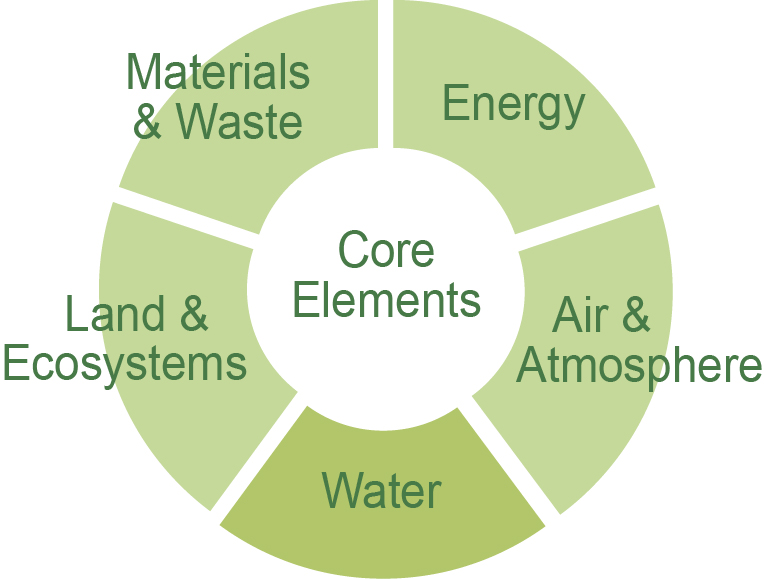Green Remediation Focus
Green Remediation Core Elements: Water

Learn about the other core elements for green remediation strategies by clicking on them.
Green remediation strategies addressing water quality conservation and protection build on federal mandates such as the Clean Water Act and Energy Independence and Security Act. Cleanup at many sites involves high usage of water for treatment processes such as contaminated sediment dewatering or soil washing. At most sites it requires stormwater management plans to control runoff during remedy construction and maintenance. BMPs focus on opportunities to minimize water usage, reuse treated groundwater, store or divert stormwater for beneficial use, and preserve natural hydraulic conditions.
Sample BMPs
- Install nature-based green infrastructure involving vegetated swales, rain gardens and planter boxes to promote infiltration of rainfall and snowmelt.
- Use pervious concrete, pervious asphalt or interlocking pavers instead of conventional impervious materials to re-surface areas.
- Construct a detention or retention pond that can filter pollutants carried by stormwater, prevent flooding, and store stormwater for onsite or community use.
- Identify onsite or offsite non-potable uses for treated groundwater, such as building operations, dust and fire suppression, plant irrigation, wetlands restoration or recreational impoundments.
- Use closed-loop rather than open-loop treatment processes to reduce the need for fresh water as well as raw materials and potentially improve treatment system efficiency.
Site-Specific Examples
- Groundwater that is extracted and treated via multiple systems at the 905-acre Phoenix-Goodyear Airport Superfund site in Arizona is beneficially used onsite or offsite for irrigation, fugitive dust control or heat exchange processes or injected back into the aquifer.
- The amount of raw lake water used as process water for groundwater treatment at the Aerojet-General Corporation site in Rancho Cordova, California, decreased by approximately 2 million gallons per day due to pipeline reconfigurations and other infrastructure improvements.

